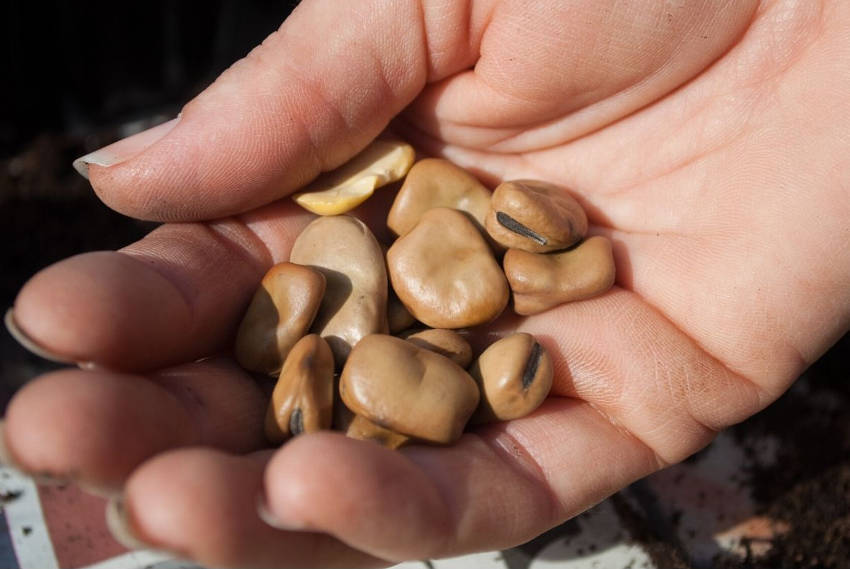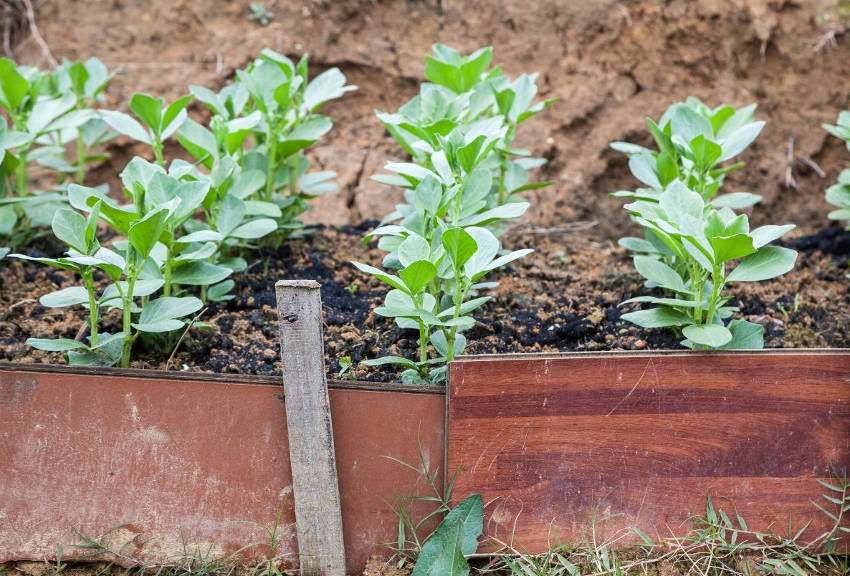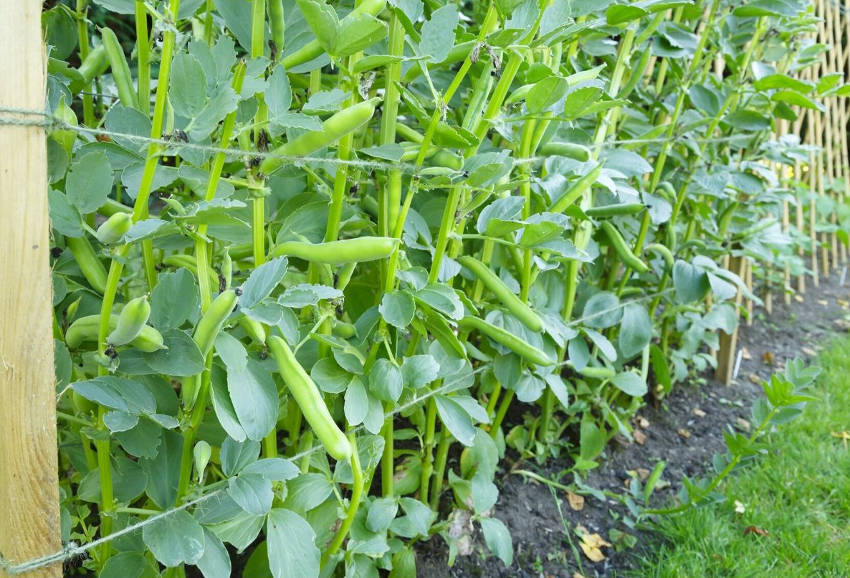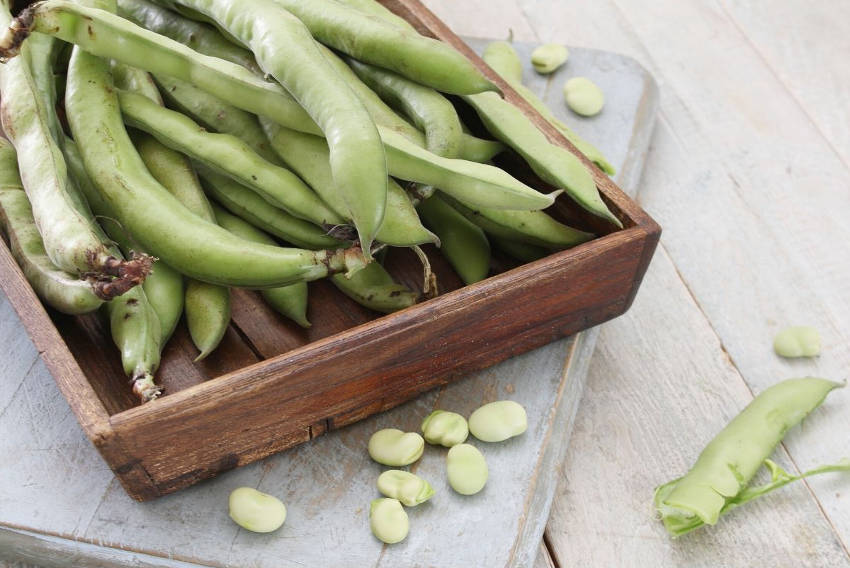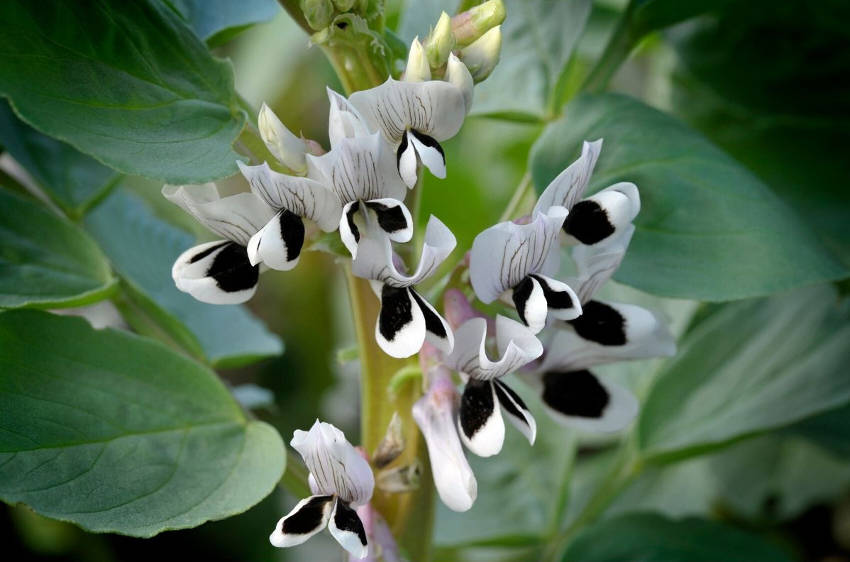Among the mainstream vegetables you can grow at home, the broad bean is perhaps the least widely celebrated. Maybe gardeners are discouraged by memories of over-boiled, tough-skinned horrors from childhood, but freshly picked beans are a league above those dismal specimens and deserve a place in any veggie patch. Here's what you need to know about this easy-to-grow, generous plant.
Broad Bean History and Botany
Broad beans have the botanical name Vicia faba, and are also known as fava beans in some parts of the world. It's not clear precisely where they originated, but they've been grown in the Middle East region for millennia, and it's a fair guess they hail from that part of the world.
Broad beans are part of the wider legume family, with the botanical genus of Fabaceae, and are related to peas, lentils, and peanuts as well as other types of bean.
Growth Habits and Appearance
Most broad bean plants grow with a main central stem, although some varieties produce multiple stems splitting out from soil level. The mature plant can reach between 50-180cm in height, depending on the variety. The stems are stiff and relatively self-supporting, compared to the tendril-producing climbing habit of its cousin the pea.
In spring and early summer, the plants produce flowers of between 1cm and 2.5cm across, usually with five white, black-spotted petals although some varieties produce crimson blooms. The flowers are partially self-pollinating but the plant will be more productive if insects have access, an important point to bear in mind for growing under cover.
Once pollinated, the flowers go on to produce downy bean pods of up to 25cm in length, each containing around three to eight beans. On average, the beans themselves account for around a third of the unopened pod's weight, which is a handy ratio to remember when following recipes.
Broad Beans in the Kitchen
Broad beans can sometimes be tough and leathery, but this is usually down to overly mature beans being cooked badly. If you grow your own, you can pick the beans at the perfect time for them to be a sweet and tender revelation.
Young beans are great in zesty salads, either lightly cooked or even raw if very young. And if you catch your homegrown beans very young indeed, you can eat the whole pod, raw and unshelled. However, be aware that some people have an intolerance to raw beans in quantity, so tread carefully at first.
The young tender foliage can also be used as a tasty green, either wilted in butter, steamed, or chopped and added to dishes such as risotto.
Older beans have an outer skin which becomes tougher with age, a situation made even worse by overcooking. For particularly old beans, it can be helpful to 'double pod' them by slipping the skins off between thumb and finger after a short parboil, then using the tender remainder in your recipes.
Whereas young beans are usually sweet and tender, more mature ones can take on a mealy texture and a slightly bitter taste. However, this is far from a disaster. Large beans, boiled, skinned and mashed, can form the basis of many classic Middle Eastern dishes including falafel, hummous, and the Egyptian favourite ful medames, or long-stewed beans
Broad Beans and Nutrition
Broad beans provide excellent nutritional value. They're high in protein and fibre but low in fat, making them a great protein source to help with weight control.
They're rich in the B vitamins, vitamin K, folate, and a wide range of minerals to support all-round health. They also contain a substance known as levodopa, which the body can convert into the neurotransmitter dopamine. For this reason many nutritionists advocate eating broad beans to help with the symptoms of Parkinson's disease, dementia, and other brain-related conditions, although the evidence is disputed.
Broad Beans as a Green Manure
Green manure is one of the secret weapons in the organic gardener's armoury, and broad beans make an excellent manure crop. They'll carry out the standard tasks of adding nutrients to the soil, providing weed cover, and preventing erosion, to protect and restore a bare end-of-season patch until it's time to sow anew.
But as with all legume plants, broad beans will also fix nitrogen into the soil as they grow, creating ideal conditions for a later sowing of brassicas and other leafy crops.
To use broad beans as a green manure, sow the seeds in the soil when summer plants have been lifted and the beds are bare. Don't worry too much about spacing, as the intention isn't to cultivate a healthy bean harvest.
Let the seeds germinate, keeping the bed weed-free until the plants are established, and then let them overwinter. About 6 weeks before you plan to sow your next seeds or transplant seedlings, cut the plants back down to soil level and leave them for a day or two to wilt down.
Finally, dig the plants down into the bed, turning the soil to at least 25-30cm deep. The debris will rot down in place, giving your seedlings a great start to the growing season.
Crop Cultivation of Broad Beans
However, if you want to produce a harvest of beans, a more careful approach to cultivation is required.
Broad beans are fairly tolerant of salty and clay soil, but do best in a rich loam with a pH of between 6.0 and 7.5. They're most productive in full sun but will tolerate partial shade, although with reduced cropping.
The beans can be sown direct from mid-spring, or for an earlier harvest they can be sown in late autumn and allowed to overwinter, where you can expect pods to form from mid-to-late spring on the plants which survive winter and pest attention.
Sow seeds in pairs 5cm deep and 20cm apart, with 60cm between rows. The seedlings can later be thinned out if needed, leaving the stronger of each pair.
As the first baby pods start to appear after flowering, pinch out the growing tips of each plant. This helps to concentrate growth into the harvest, but will also remove the tastiest, most tender targets of aphid infestation. These pinched-out tops shouldn't be wasted, however, as they're delicious in the kitchen.
If you're growing a taller variety, or if your bed is in an exposed location, a loose support made from canes and string will help stop the plants from blowing over or collapsing under a heavy pod weight.
Harvesting
On average, you can harvest around three to four months after sowing, although this will depend on both the growing conditions and your preference for final pod size.
Common Cultivation Problems
Broad beans are generally trouble free and attract few pests. Aphids can be a problem, and should be dealt with promptly using an organic spray, a gentle hosing down, or simply by squashing between your fingers.
The plants can also be targeted by pea and bean weevil, but the damage is mainly to foliage rather than pods, leading to reduced vigour rather than all-out disaster.
There are a couple of fungal diseases which are sometimes encountered. Faba bean rust can be damaging, but mostly affects mature plants and so won't have much impact on harvests.
A little more dangerous is the chocolate spot fungal disease, which causes discolouration of pods and foliage and can badly affect the plant's growth.
The best way to avoid both these and other fungal diseases is to water a little and often without excessive splashing, and making sure air can circulate freely around the plants.
Broad beans might not be a staple in the same league as peas, but they're simple to grow and forgiving of less-than-perfect conditions. And when they taste so much better than the store-bought variety, they'll quickly become a regular feature of your veggie patch.
